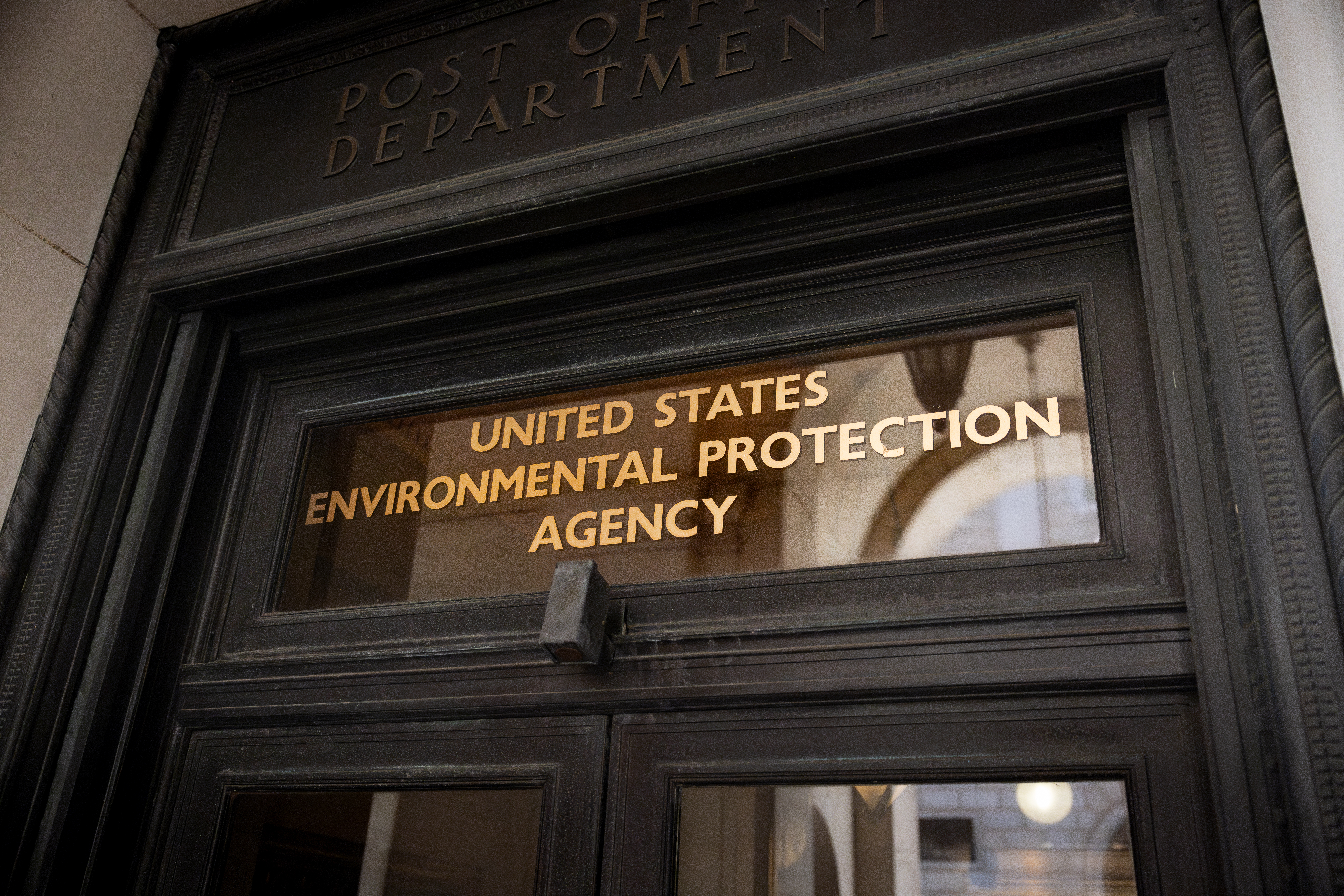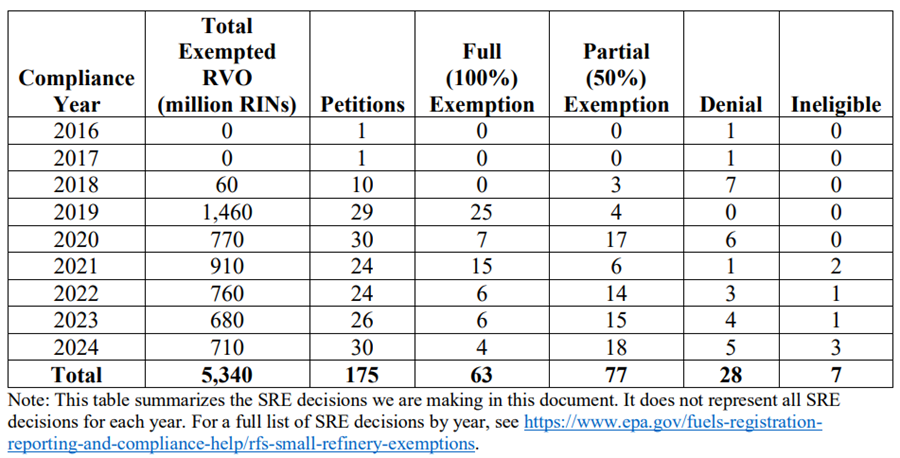
When the U.S. Environmental Protection Agency (EPA) announced its decisions on 175 pending small refinery exemptions (SREs) on August 22, the agency also announced that it would soon be releasing a proposed rule to take comment on reallocating waived SRE gallons for the 2023 and newer compliance years. While our industry awaits that proposal, there’s still plenty to unpack in the EPA’s ruling.
EPA Granted the Majority of SREs
The number of granted SREs is, on its face, significant, but the full impact of these exemptions will depend on what’s in EPA’s forthcoming rule on reallocation. Still, the agency’s approach largely clears the backlog of pending SREs and provides positive signals moving forward as they work to finalize their latest renewable volume obligation (RVO) proposal.
In all, EPA approved a total of 140 petitions: 63 full exemptions and 77 partial (50%) exemptions. The agency also denied 28 petitions and declared seven other petitions ineligible. The total exemption volume is 5.34 billion RINs, but it’s important to remember that RINs expire after two years, and that RINs returned to refineries for compliance years 2022 and earlier cannot be used to meet future compliance years. In essence, this leaves 1.41 billion RINs for 2023 and 2024 available for use in currently-open compliance years. EPA’s table can be found below and in the linked documents below:

EPA Did Not Rule on Pending 2025 SREs
For still-pending exemption requests, EPA (rightly) did not make any determinations regarding 2025 SREs. This is due to the fact that, to request an exemption, a small refinery needs to submit three quarters of financial data for the year for which the refinery is seeking an SRE. As a result, refiners are unable to provide this data until at least October 2025, so a decision on 2025 SREs will have to wait until at least then.
EPA Outlined a RIN Return Policy
For refineries that already retired RINs for compliance, EPA said that it will return those RINs (or a portion for partial exemptions). Pre-2023 vintage RINs will be “expired,” meaning they’ll have limited utility beyond meeting still-outstanding prior obligations. However, RINs from 2023 and later will remain viable for trading or for 2024 compliance. EPA justified this approach by observing that this avoids injecting approximately three billion new RINs into the market all at once—a high number that might distort the market and potentially cause prices to crash. Still, even with the expirations, EPA’s approach does reintroduce some additional RIN supply that may dilute demand.
EPA Permitted RIN Deficit Carryovers for 2023-2024
If a small refinery carried a RIN deficit from 2023 into 2024 and received a denial or partial grant of their 2023 SRE petition, EPA will allow those refineries to retire additional 2023 RINs to count toward their 2023 RVOs.
EPA Said It Would Not Reallocate Volumes for 2022 and Earlier Compliance Years
EPA’s announcement also noted said that it will not propose reallocating exempted volumes from 2016-2022, citing limitations on RIN usability (e.g., the two-year validity window). This means there will be no retroactive increase in blending obligations for other parties and essentially locks in a reduced biofuel demand for those periods.
EPA Said It Would Rule Separately on Reallocation for More Recent Years
As noted above, EPA’s said in its release on the topic that it “will submit a draft supplemental proposed rule to the Office of Management and Budget (OMB) on the proposed reallocations of the 2023 and later compliance year exempted volumes.” The agency continued, saying:
“EPA will also be providing updated information on how the agency intends to project SREs for 2026 and 2027 in the context of establishing percentage standards for those years. The proposed adjustments will help ensure that refineries blend the intended volumes of renewable fuel into the nation’s fuel supply in 2026 and 2027 after accounting for the SREs granted for 2023 and 2024 in today’s actions and projected SREs granted for 2025-2027 in [the] Set 2.”
EPA Announced an Overall Shift in Its SRE Approach
More broadly, EPA’s decision also announced its plan to change its overall approach to granting SREs, reverting back to a 2020 Trump Administration rubric and granting partial (50%) exemptions for refineries that are able to demonstrate “partial hardship” based on the Department of Energy’s (DOE) 2011 Small Refinery Study. Basically, EPA said that it would use DOE’s Economic Hardship matrix as a proxy for demonstrating hardship unless other economic factors warranted deviation.
Find related documents below:
We’ll be preparing to respond to the upcoming reallocation rule when that is released. Meanwhile, we have already scheduled a member webinar about EPA’s SRE decision for Tuesday, September 2nd at 12 pm CDT / 1 pm EDT, to hear updates from the Growth Energy team on the SREs, reallocation, and the status of EPA’s RVO proposal. Growth Energy members should check their email for a registration link.